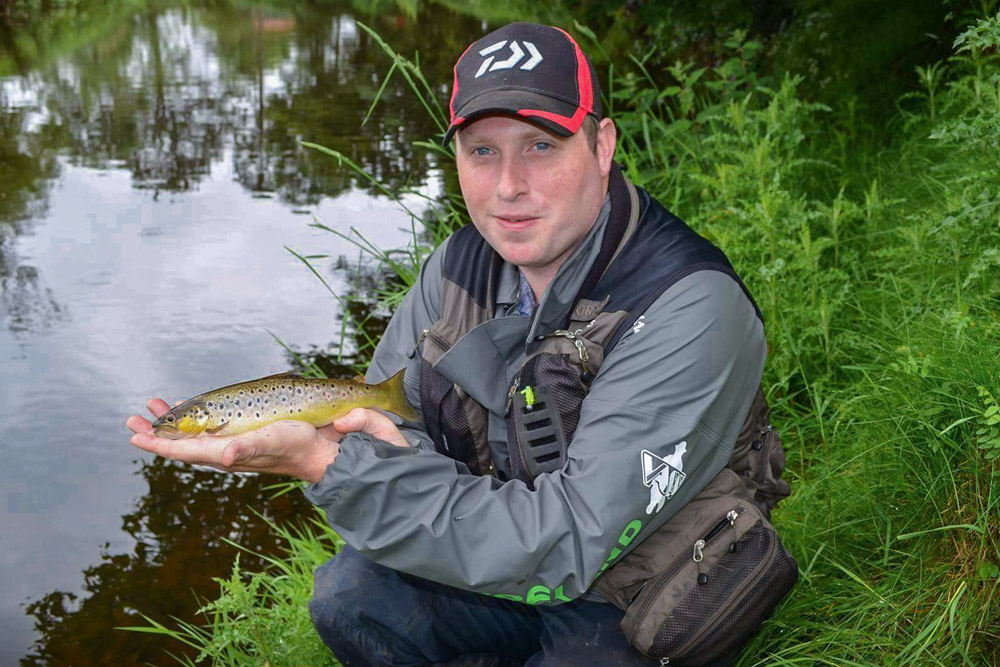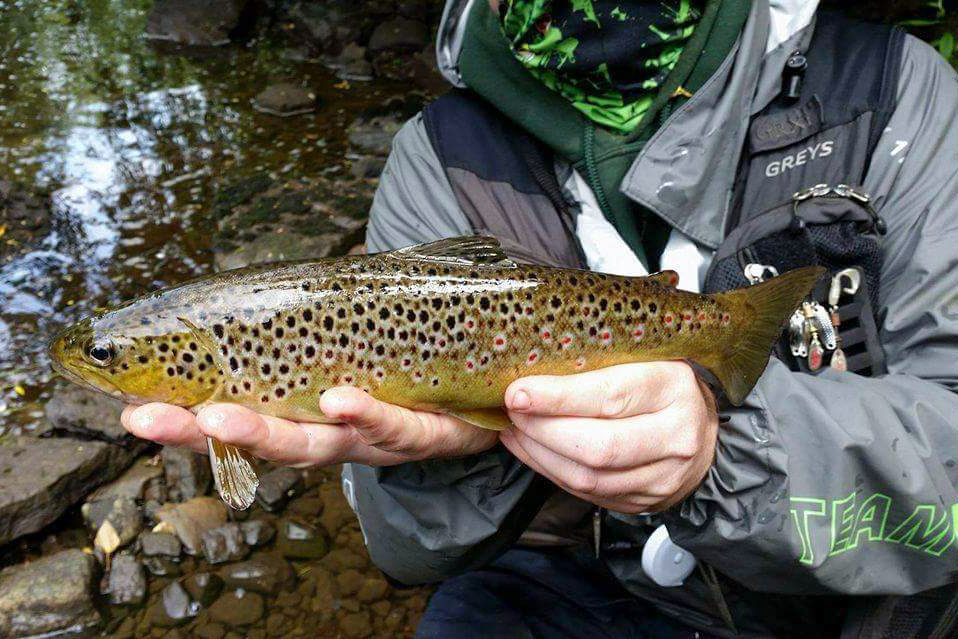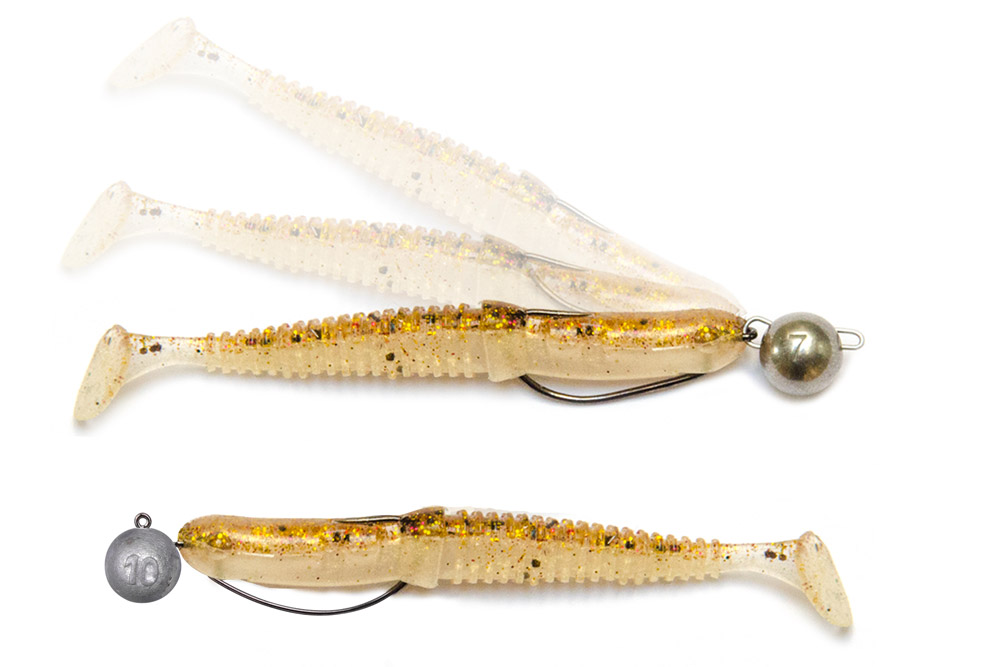The lure of trout
Lure specialist Dave Bowles explains why lure fishing for wild brown trout has really taken off in recent years
Issue 15 (Mar-Apr 2017) Dave Bowles Dave Bowles & friends
Although not strictly traditional, lure fishing for wild brown trout can be as exhilarating and exciting as any form of fishing, with their acrobatic jumps and hasty following of lures. Little wonder, then, that it is fast becoming a very attractive aspect of the sport to many, especially as the ultra-light lure scene is really starting to take off here on our Irish and UK shores.
The gear
As some of you might know, I’m an ultra-light specialist and although I really enjoy fly fishing for trout I am indeed no expert on the matter. However, I have adapted fly fishing techniques into my light tackle trout fishing and it really seems to work quite well. The clue is in the name I guess, but you really don’t need heavy gear. A rod rating of just 5-10 gram is more than enough to cover any budding trout stream as you’re not likely to be catching exceptionally large trout. A fish of a about a pound is a very good fish on ultra-light gear, and indeed on many small streams and rivers, in general. Even fish of this size give your balanced tackle a really good workout. This style of fishing is simply good fun and fish size should be the least of your concerns.
On your reel, you can use braid or regular mono, or indeed fluorocarbon if you so desire. Anything from 4-10lb breaking strain is ample as far as braid goes, as you can get it in such a thin diameter. A mono of 4lb (same thickness as perhaps 15-20lb braid) is also ideal in such situations but I would say braid rules when doing any type of lure fishing.
“This style of fishing is simply good fun and fish size should be the least of your concerns”


Lures
“What kind of lures do I need, and which ones work best?” might you ask, and I do get asked this a lot. In all honesty there is no wrong or right answer here, and is mostly down to trial and error. Trout are usually fairly aggressive and often you’ll find them willing to attack a great many patterns. From my own results I must say I do find that plugs, or “wobblers” as we like to call them, from companies such as Pontoon 21, Gunki or Rapala will most certainly catch you fish a lot of the time, especially if there 3-5cm in length and have a sinking or a suspended version. It also pays to carry a good selection of both versions and a variety of different colours.

Soft plastics have really opened the field in modern trout angling and there are some superb quality and really life-like imitations out there, especially in something like the L-Baits range. The L-Nymph is a first class example, particularly when fishing upstream like you would do if you were nymphing fishing with a fly rod. This is where your fine braided line would come in handy, as it allows you to detect the delicate bites common in the early part of the year when you would do this type of fishing most. Another example I like is the Slider series from Snapbaits . These are tiny 1″ paddle-tail type lures and the trout often seem to crawl up the rod after them. I am sure this is due to a combination of action and lure size. I’ve even had trout jump from the water to take it at the end of a retrieve! There are also worm imitations and numerous others, so many, in fact, that I could write page after page and still not cover a tiny fraction of them.
Although my mainstay is soft plastics, remember never to overlook the humble spinner. They’re a good classic staple of my lure box and have caught me an endless amount of trout over the years. We all know of makes such as Mepps, Blue fox and even Flying Cs and almost every tackle shop will have some in stock.


Homework
When I approach a trout stream or river I usually spend a few minutes inspecting swims. I do this purely to access the conditions and how the flow of the river will have an effect on my lure choice. For each swim, at the top (head) and bottom (tail) ends I will mostly be fishing plugs, casting directly across the main current and slowly retrieving the lure, with an odd pause as the lure comes back along my on bank at the end of the retrieve. Like practically all other lure fishing, a good tip is to hover the lure at this moment, just for a few seconds. It’s always surprising the amount of fish that follow all the way to the bank and take right at the end of a retrieve. Don’t be afraid to impart some extra action into your lure at this point – try a stop and start motion, a few twitches on the rod tip, anything to entice a fish that may be following.
Many anglers will think soft plastics must be fished, jigged or hopped back slowly, but this isn’t true. Try just keeping it in pace with the current and get that tail working on the retrieve rather than on the fall back down to the bottom (as you usually would for perch, for example). This is especially effective if you’re trying to fish under a tree or behind a rock as you can cast beyond the intended obstacle and wind the lure under or past it without fear (usually) of snagging up. Give the lure a few jigs to impart some action as you retrieve and be sure to keep your finger on the line when doing so, as a fish taking the lure will be indicated by little pluck on the line.

A typical session
At the back end of the trout season last year (September 2016) I teamed up with a good buddy of mine, who I am teaching the art of ultra-light fishing to. We arrived at the river and it was in perfect condition, not too shallow but not too high either. We spent a few minutes figuring out the river, studying the runs and watching for rising fish. After a brief talk we selected our lures, both opting for plugs in brown trout parr colour. The fishing was slow on the trout front, as the perch in the river were hitting the baits before the trout could get to them, not that we were complaining – it was excellent sport. I enjoy catching perch but we were really there for the trout.
After a fishing a few runs, we turned our attention to some slightly faster water (less “perchy”) with a good flow at the top end of the pool. I deliberately put my buddy into the best part of the stretch (promise!) but after a few casts he said, “I don’t think there’s any fish in this swim either”. At this point I wandered over to see how he was fishing it. He was doing it exactly right, bar one little thing. As most of us know, in fishing it is often the little things that make the biggest difference. I thought it best to show him rather than explain so I quickly cast my lure to the edge of the flow of the pool and with a few taps of the rod I got a solid hit. It felt like a tout and this was soon confirmed after a few energetic jumps. As many a fly angler will testify, wild brownies, especially the smaller ones, typically throw themselves repeatedly out of the water when hooked. The fish was soon landed in a spray of water and was a wonderful example of the species, so perfect and beautiful you would think it had been hand painted.

My buddy continued to fish with “wobblers” catching a few lovely trout here and there, each one immaculate and pristine, and each one released, of course. At this point I had changed over to soft plastics and to a micro (1″) chartreuse slider from Snapbaits. I made a small flick upstream and made sure to keep in good contact with the lure, taking up the slack line as needs be. This is key as you will not detect the hit from the fish otherwise. Micro jig heads (like 1-3g) are invaluable here in this situation and if you can get them with long shank streamer hooks then so much the better, as this will place the hook point out near the back of the lure resulting in more hooked fish. Trout are very finicky when it comes to jig heads I find, and can spit a bait if they feel too much weight. You can also use a Chebruska rig for this style of fishing as it will give a bit more movement to the soft plastic, which is always a bonus.
“Trout are very finicky when it comes to jig heads I find, and can spit a bait if they feel too much weight”

After fishing about half a dozen runs, I had landed ten wild brownies, nothing big but superb sport on the tackle used. I’m not for one second saying it’s more fun or more effective than traditional fly fishing, just different and equally as enjoyable in my book. I’ll continue to try and perfect this style of fishing to suit my own way of going about a river and hopefully now that the new trout season has started I will soon have a few of these wonderful wild fish in my hands soon. I hope you do, too.
Dave Bowles
